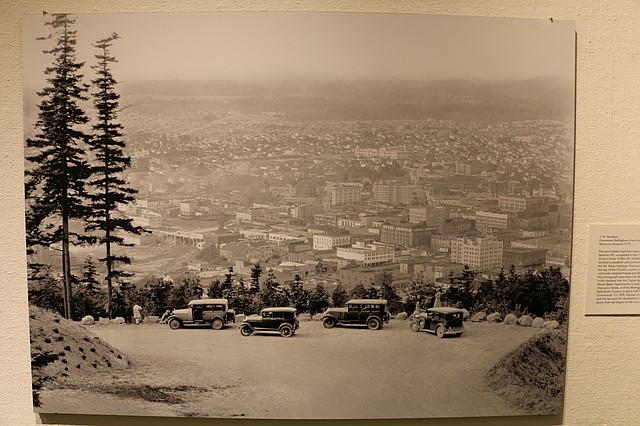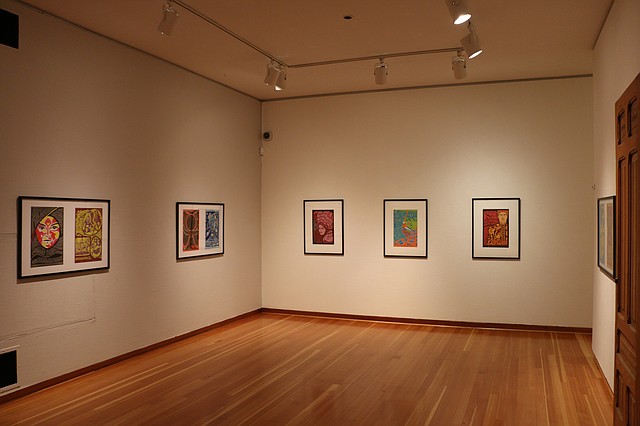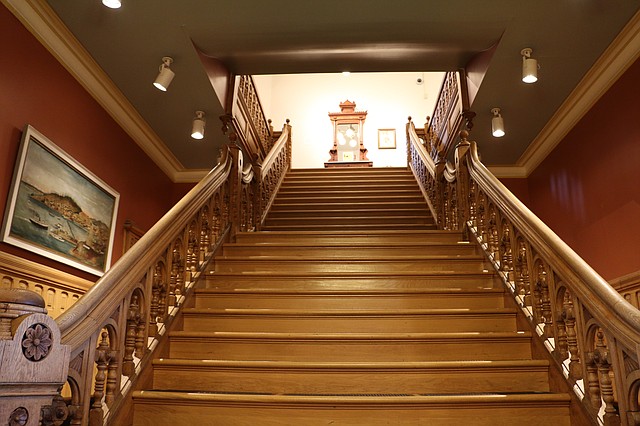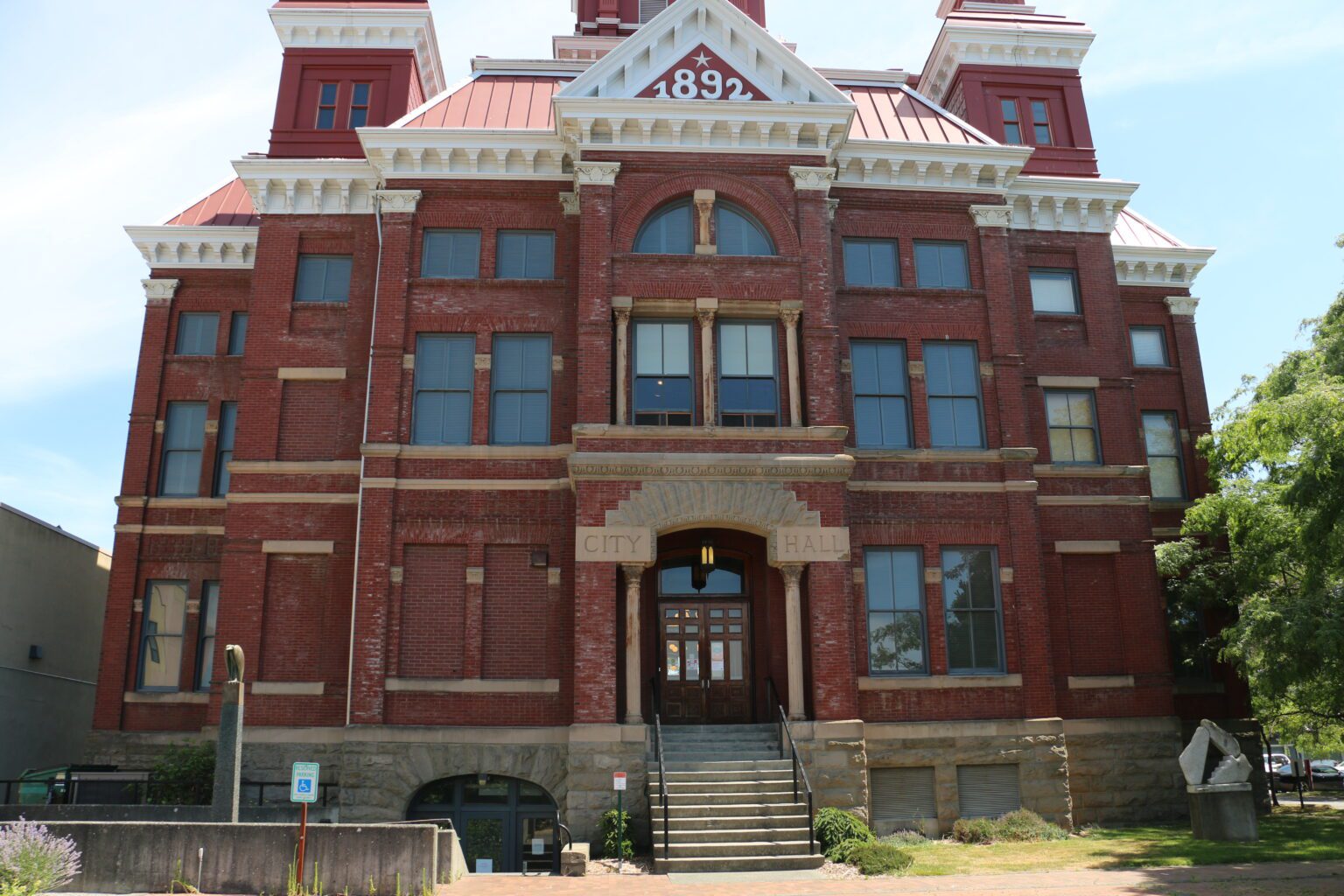If you ever find yourself with a free Sunday afternoon and an overwhelming urge to discover the history of the City of Subdued Excitement, consider taking Whatcom Museum’s historical tour of the 1892 Old City Hall. Tours of the iconic Bellingham landmark recently resumed after a two-year pandemic hiatus.
Our tour guide Sunday was Whatcom Museum docent Brian Griffin, a longtime resident of Bellingham who has seen the city evolve from a gritty timber town to the lively tourist mecca it is today.
We started outside, near the back entrance of the building, overlooking Bellingham Bay. From this vantage point, Griffin explained the history of the landscape that lay before us. Most surprising to me was that most of the city below the bluff that contains downtown Bellingham is built on fill. Previously, he told us, the tidal flats came right up to the bluff’s edge. He showed us a black-and-white photo of a group of Lummi people with canoes on the beach at what is now Maritime Heritage Park.
 The building holds many historic photos of Bellingham, including this 1929 portrait of motorists overlooking the city from Sehome Hill. (Brendan Gardner/Cascadia Daily News)
The building holds many historic photos of Bellingham, including this 1929 portrait of motorists overlooking the city from Sehome Hill. (Brendan Gardner/Cascadia Daily News)
Griffin explained that the building’s inception was the result of competition between the municipalities that combined to form Bellingham in 1903. The four towns — Whatcom, Fairhaven, Sehome and Bellingham — were founded at various points in the second half of the 19th century to supply lumber and coal to San Francisco, which was booming as the gold rush and promise of land newly taken from its original Indigenous inhabitants enticed Euro-American settlers westward.
In the early 1890s, Fairhaven combined with Bellingham, while Sehome and Whatcom merged to create New Whatcom. Fairhaven constructed a magnificent new hotel, and the New Whatcom residents, unwilling to be outdone by their southerly rivals, decided to build an impressive new city hall, Griffin told us.
“This building is essentially the result of the competitive nature of the two towns,” he said.
 The former Bellingham Municipal Courthouse, which handled various petty crimes, currently displays the 1960s psychedelic posters of Bonnie MacLean. (Brendan Gardner/Cascadia Daily News)
The former Bellingham Municipal Courthouse, which handled various petty crimes, currently displays the 1960s psychedelic posters of Bonnie MacLean. (Brendan Gardner/Cascadia Daily News)
Back inside, Griffin led us into the former municipal courthouse, now a brightly lit room filled with psychedelic posters for 1960s artists like Donovan and The Doors. I was struck by how dramatically the room has changed and wondered what early-1900s troublemakers arrested for “[riding] their horses too fast” would think of the acid-inspired concert advertisements now adorning the walls of their place of trial.
Griffin then led us down a steep stairwell into the county jail in the basement of the building, which contains multiple dingy cells, some marked with graffiti from prisoners long ago. Of particular note was a padded closet that held alcohol seized by Prohibition-era authorities from bootleggers as they passed through Bellingham, a popular smuggling destination at the time.
 An ornate historic staircase, built from local lumber, leads up from the first floor. Construction on the upper floors of the building was delayed by an economic downturn. (Brendan Gardner/Cascadia Daily News)
An ornate historic staircase, built from local lumber, leads up from the first floor. Construction on the upper floors of the building was delayed by an economic downturn. (Brendan Gardner/Cascadia Daily News)
As we ascended the ornate wooden staircase to the second floor, Griffin explained that construction of the upper floors of the building was delayed for years after the unfortunately-timed Panic of 1893 plunged the country — including Bellingham — into a severe depression, depriving the city of the necessary funds to complete the building.
Historical points of interest on the second floor included the large chamber where the Bellingham City Council met prior to the construction of the current City Hall in 1939, and several exhibits on the Bellingham logging and shipping industries. Photos of enormous logs jam-packed into Bellingham harbor brought Griffin back to his childhood, when kids would play in and around the floating timber.
Tours are held every Sunday from 1–2 p.m. at the Old City Hall, 121 Prospect St. Info: whatcommuseum.org.




